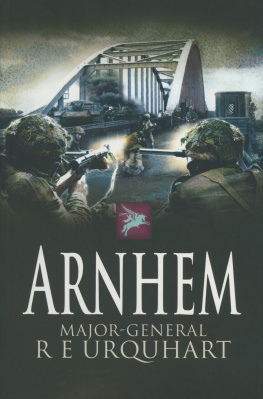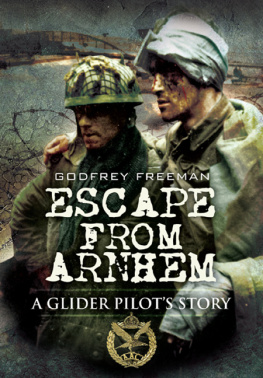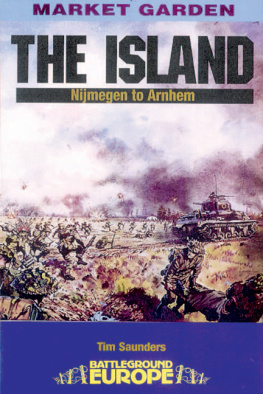First published in Great Britain in 1958 by William Heinemann Ltd Reprinted in 1976 by Leo Cooper Ltd.
This edition first published in Great Britain by
Pen & Sword Military
an imprint of
Pen & Sword Books Ltd
47 Church Street
Barnsley
South Yorkshire
S70 2AS
Copyright Lipmann Kessel
9781783830503
The right of Lipmann Kessel and John St John to be identified as Authors of this Work has been asserted by them in accordance with the Copyright, Designs and Patents Act 1988.
A CIP catalogue record for this book is available from the British Library.
All rights reserved. No part of this book may be reproduced or transmitted in any form or by any means, electronic or mechanical including photocopying, recording or by any information storage and retrieval system, without permission from the Publisher in writing.
Typeset in 11.5pt Ehrhardt by
Mac Style, Beverley, E. Yorkshire
Printed and bound in the UK by CPI
Pen & Sword Books Ltd incorporates the Imprints of Pen & Sword Aviation, Pen & Sword Family History, Pen & Sword Maritime, Pen & Sword Military, Pen & Sword Discovery, Wharncliffe Local History, Wharncliffe True Crime, Wharncliffe Transport, Pen & Sword Select, Pen & Sword Military Classics, Leo Cooper, The Praetorian Press, Remember When, Seaforth Publishing and Frontline Publishing.
For a complete list of Pen & Sword titles please contact
PEN & SWORD BOOKS LIMITED
47 Church Street, Barnsley, South Yorkshire, S70 2AS, England
E-mail: enquiries@pen-and-sword.co.uk
Website: www.pen-and-sword.co.uk
Table of Contents
De Sade would have made a rotten surgeon
Dr Alex Comfort, reviewing a history
of surgery for the New Statesman
John Verney in Going to the Wars, perhaps the most humane and profound book to come out of the Second World War so far, gives cogent reasons why no more personal war memoirs should be written. Truth, he says, is less readable than fiction, and our story is already stale as yesterdays newspaper. He quotes a devastating reviewer: One is becoming as bored of these escape stories as of their tellers, beamish boys galumphing their way home through a tangle of generous peasants, Fascist spies and boastful partisans. They march great distances, but Einstein, one imagines, goes farther every day without stirring a foot. Perhaps he is right? Certainly he is when it comes to those who put a gloss on what happened, who glamourise the brutality and the pain. And yet much of what needs to be said and remembered and felt is still lacking. The belief that this is true is the reason for this book. Not that it really requires one. After more than ten years it still demanded to be written.
L.K.
J. St J.
1958
Foreword
I had the good fortune to meet the author of this extraordinary story more than twenty years after those desperate and devilish days of the Arnhem drop, and his London hospital then was a calmer place than the Dutch St Elizabeths behind the German lines. Both of us were pretty tranquil characters by then, though it had taken some time.
By a crazy chance we might equally have met on that courageous failure over the Rhine. I too, as a correspondent, was almost attached to that engagement with the brave lost lot; I was replaced, which I cursed at the time and lived to give thanks for later.
This is a very singular book, because Lipmann Kessel is a very singular man. One no longer has to be told that he is a surgeon of great contemporary eminence; that is all one should properly say about that. It is not wholly irrelevant, however, since it was as a surgeon that he found himself in the barbaric confusions of the closing days of the European war. Many of us were, and more ignobly. He is also among that comparatively rare company of successful professionals: a man of very quiet but adamantine principles, one of which is that war however engrossing, however exciting, even paradoxically however justified, is an outrage against the spirit of man, and only one thing is more outrageous: that the historians of war and the adventures of war should for one second glorify it, or endorse its origins, or in the smallest way encourage its repetition. With this, as with so much else, I go along with him all the way.
Nous sommes tous coupables. I too, like Lipmann Kessel, have found myself a somewhat baffled participant in these encounters, wearing an odd variety of uniforms with a strangely reluctant acceptance, though my camp-follower role had less dignity than his.
A certain dilemma, then, arises with the publication of this remarkable book. The story is it must be faced one of the memorable documents of escape drama; it has every element that for twenty-five years has made war into a riveting adventure. Yet the worst service I could do to the book or its author is to present it on those terms. It is much more important than that.
Lippy Kessel was parachuted with the 1st Airborne Division near Arnhem in September 1944, and in next to no time was at work in a Dutch hospital under German control. It must have been a bizarre experience for a surgeon, coping with a cataract of casualties in a theatre that changed hands several times and, at the same time, maintaining contact with the local Dutch Resistance and their escape-routes. Whether he likes it or not it is a record of multiple heroism. Yet his composition is drawn of the courage not of the soldiers (who after all have little choice) nor of the villainy of the Germans (of whom much the same could be said, given odd aberrations of character, as marvellously described in a visit to an SS doctors mess) but of the ordinary Dutch local peoples far less well-known tenacity against the insult of Occupation.
Lipmann Kessel hated the whole episode, but he would not be human if he did not relish it in retrospect. Yet it can be seen only as a morality as perhaps all war stories are a morality. As a soldier, his obligations were well enough defined, but clearly his attitudes were qualified by other factors and loyalties. As a doctor he was by definition more interested in preserving life than in destroying it. As a Jew he had every possible interest in seeing the overthrow of the Nazi system, and to work in whatever way he could to bring it about.
These two obligations were primary. The other, the military obligation, was specifically a means to the achievement of those ends. If need be, Lippy Kessel would do it again. But if one word in this book brought that need nearer, the book were better lost.
The exact reverse is true. Surgery is unnatural; it can be done with love, it can be painful, it can be brutal. War, too, is all those things, but lacking love. There is an analogy. The true disaster, perhaps the one mortal sin, is to believe that the healing knife can ever be the dagger.
This is a tale of bravery, but not of battles; it is a tale of hope and not of horror. It is not really a War Story at all. It is the story of a surgeon at arms.












